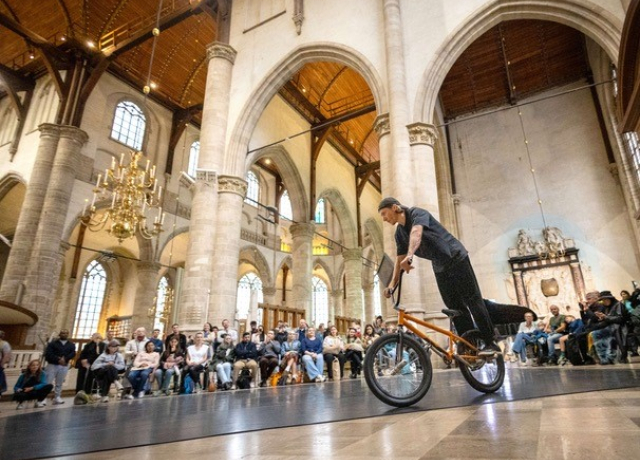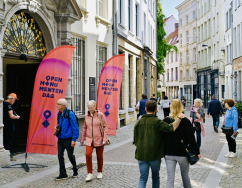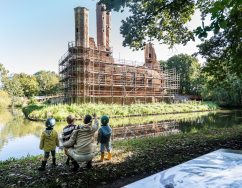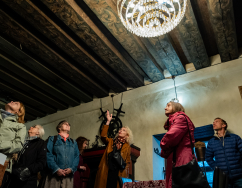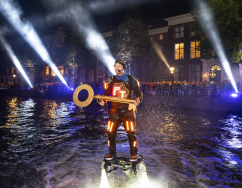European Heritage Days Article:
Experiencing Rotterdam’s Open Monumentendag
European Heritage Days Article:
Experiencing Rotterdam’s Open Monumentendag
Citrusveiling – Rotterdam’s Post-War Gateway to the World
For me, the Rotterdam visit began at the Citrusveiling, a striking example of post-war reconstruction with a global story. This monumental building formed the cornerstone of the Merwedehaven area, once one of the world’s largest fruit harbours where countless tons of fruit and other goods were stored and transhipped daily.
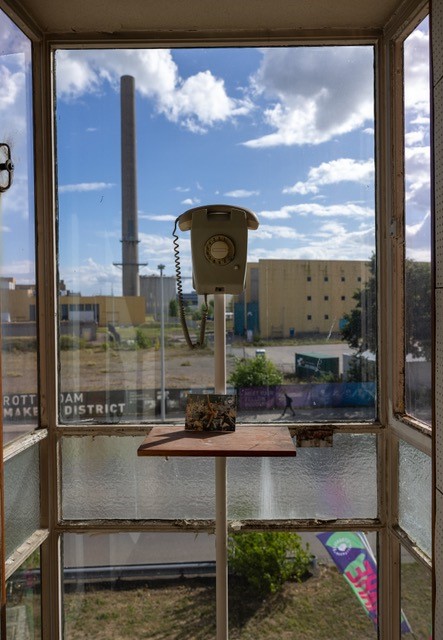
For years, auctions took place at the Algemeen Verkooplokaal on the Goudsingel. In 1950, to strengthen Rotterdam’s position as a transit port, the city commissioned a state-of-the-art fruit centre. Architects Van Tijen and Maaskant, with Hugh Maaskant producing the design, created a complex bounded by Marconistraat on one side and the harbour railway on the other. It consists of an auction hall and a long building for storage and offices.
Both the interior and exterior remain largely in their original state. The expressive design, decorative elements, and architectural details, together with its historical role in the city’s fruit trade, make the building highly significant – recognised since 2010 on the National Register of Monuments. On 14 September, the Citrusveiling welcomed the public with an exhibition and guided tours.
Groot Handelsgebouw – A Landmark of Collective Strength
Another highlight is the Groot Handelsgebouw, the flagship of Rotterdam’s post-war reconstruction. Designed by Huig Maaskant and Willem van Tijen to fill the void left by wartime bombing, it was officially opened by Queen Juliana in 1953 as the largest building in the Netherlands.
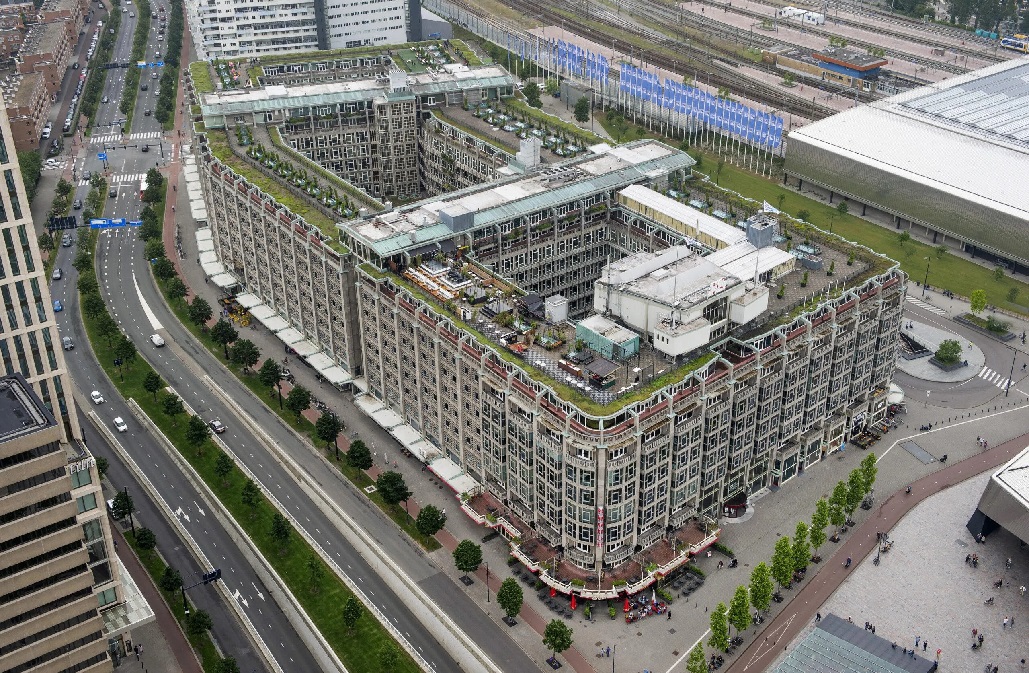
Stretching 220 metres long, 85 metres wide, and 43 metres high, the complex covers 445,000 square metres over nine storeys, with three inner courtyards and a 1.5-kilometre internal road. This innovative concept allowed entrepreneurs to combine warehouses, showrooms, and offices under one roof – celebrated at the time as “a symbol of collective strength and the unshakeable belief in Rotterdam’s capacity to grow.”
Today, the building is home to more than 400 companies and two innovative office hubs – Kleinhandel and the Cambridge Innovation Centre – as well as cycle hire, childcare, fitness studios, restaurants, and cafés. Atop it lies Rotterdam’s largest green roof.
During Open Monumentendag, the Groot Handelsgebouw also hosted the main information point for visitors and a special photo exhibition, “Lang Leve(n) het Erfgoed”, an exchange with the Monumentenfonds Aruba showcasing 16 prize-winning photographs of Aruban heritage captured by local hobby photographers.
Laurenskerk – The City’s Living Medieval Heart
At the heart of the city stands the Laurenskerk (St Lawrence Church), Rotterdam’s only surviving late-medieval building (1449–1525). Dedicated to St Lawrence of Rome, the patron saint of Rotterdam, it partly survived the bombing of 14 May 1940 and has since symbolised the resilience of its citizens and the city’s rebirth. Its late-Gothic silhouette contrasts dramatically with the hypermodern skyline around it.
Inside, visitors can admire Giacomo Manzù’s bronze doors depicting war and peace, the 18th-century brass choir screen, Hans Petri’s baptismal font, and the Peace and Reconciliation stained-glass window unveiled in 2021 by HRH Princess Beatrix. The church also houses three Marcussen organs, including the famous “Red Giant”, currently under restoration.
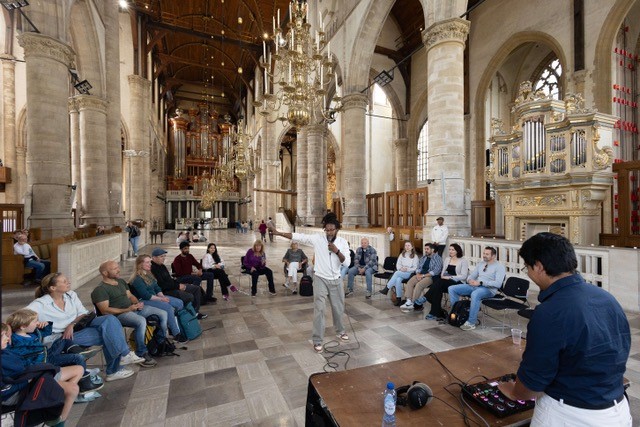
During Open Monumentendag, the Laurenskerk opened its doors wide with a première in collaboration with the Rotterdam Street Culture Week (RSCW). Artistic director Rajiv Bhagwanbali and street culture artists re-imagined the church’s historic stories through three original performances:
- - An interactive musical experience with Ivan Words and Dr. Slow Sweat, blending live sampling, spoken word, and audience participation.
- - A dialogue between classical organ and piano by Matthijs van der Wilt, paired with a freestyle BMX performance by Dez Maarsen, staged between the statue of Witte de With and the organ donated by Germany as a gesture of reconciliation.
- - A live calligraffiti performance by letter artists Daan and Spckr on a mirrored wall, fusing medieval script traditions with contemporary graffiti styles in partnership with the Street Art Festival ALL CAPS.
The result was a powerful meeting of sacred space, artistic innovation, and community co-creation.
The Lucy Havelaar House – A Home of Social Engagement
In the garden suburb of Tuindorp Vreewijk stands the Lucy Havelaar House, a detached residence built in 1918 and now a listed national monument. For its first two decades, it was home to Miss Lucy Havelaar, director of the nearby Zuider Volkshuis, a new community centre designed to “uplift” local workers. Under her leadership, the Volkshuis became a social hub, hosting courses, exhibitions, a library, reading room, kindergarten, and medical clinics.
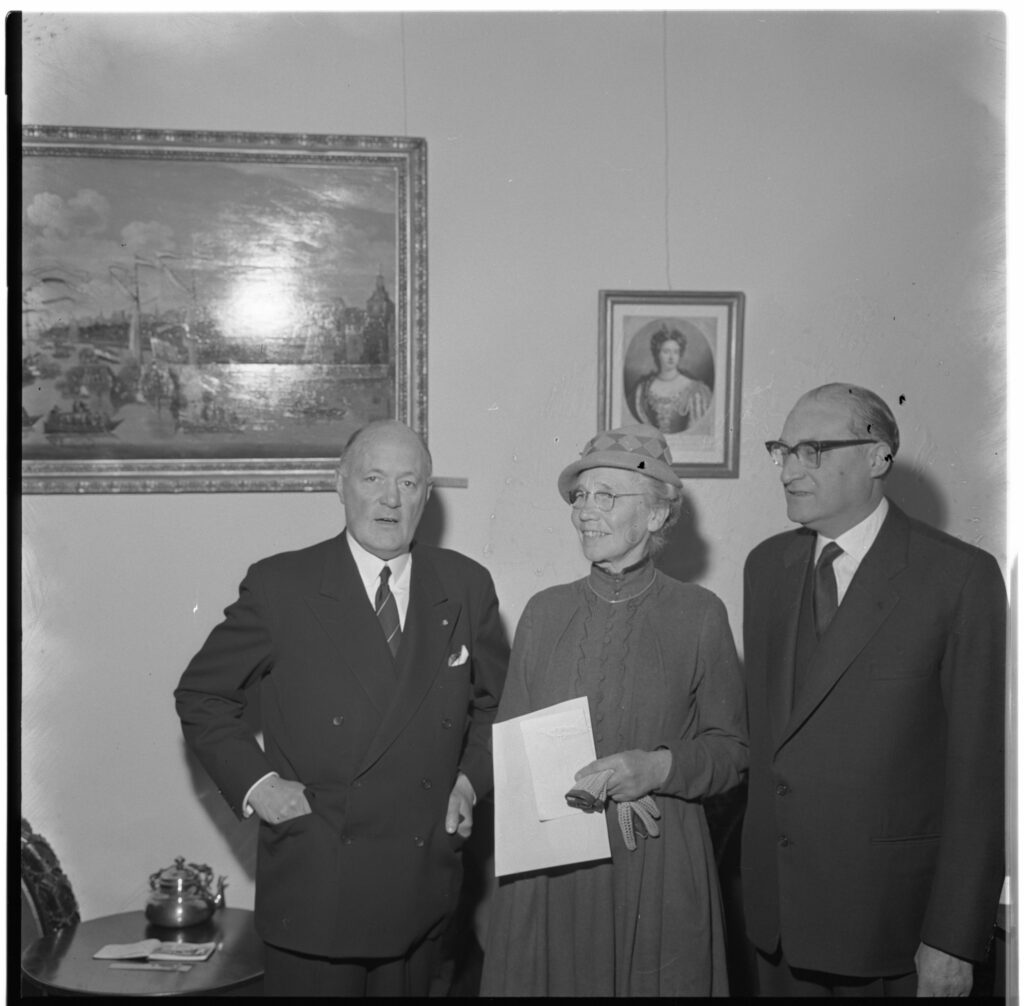
Lucy lived just around the corner at Lede 37 – the house that still bears her name today. In later years, it became home to Frits Touw, first director of the Zuider Hospital. Fully restored in 2000, it briefly served as a museum house during Rotterdam’s Capital of Culture year in 2001, with its garden redesigned in 2006.
Lucy Havelaar features in 1001 Women from Dutch History, alongside Ida Last-ter Haar, her colleague and partner of writer Jef Last, and Anne Mankes-Zernike, the Netherlands’ first female minister.
During Open Monumentendag, current resident Frans Meijer offered guided tours of the house and garden (by reservation only).
Celebrating Heritage Across Time
These four sites – from monumental auction halls to intimate community homes – illustrate the diversity and vitality of Rotterdam’s heritage. Visiting them during Open Monumentendag revealed how Europe’s shared heritage lives not only in architecture but in creativity, memory, and community life. This is the essence of the European Heritage Days: discovering, celebrating, and safeguarding the cultural treasures that connect us across borders.
